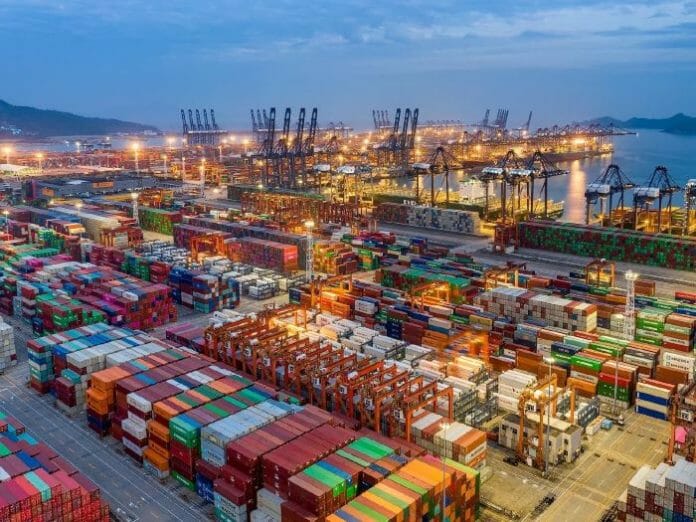Headline Inflation Jumps to +0.7% on “Moving NewYear” Effect
After four months of negative readings, Consumer Price Index (CPI) inflation returned to positive territory at +0.7% in February (Consensus: +0.3%, January: -0.8).
Maybank Investment Bank (Maybank IB) weighed in today (Mac 11) with its note on China Economics stating the swing is largely due to the occurrence of the Spring Festival in February this year, compared with January last year.
The “moving New Year” effect both depressed prices in January 2024, and bumped them up in February 2024. The uptick in headline inflation was led by the seasonal jump in food and travel prices.
On a sequential basis, food costs rose by +1.0% m-o-m, driven by pork (+7.2%), seafood (+6.2%) and vegetables (+12.7%).
Core Inflation Rises on Festive Travel Spike
Core inflation rose to +1.2% from +0.4% the previous month, with services inflation nearly quadrupling (+1.9% vs Jan 2024: +0.5%). The moving holiday played a part.
Domestic travel normalised from the last January’s Spring Festival, which had seen volumes held back due to the spread of Covid postreopening. This Spring Festival, surging festive trips drove a 23% jump in touring costs (vs +11.2% in Jan 2023).
PPI Deflation Widened to -2.7%
Producer Price Index deflation widened to -2.7% (January: -2.5%) as price levels weakened across the board for the fourth month running. As the PPI fell by -0.2% m-o-m, the same pace as January, it is too early to call a bottom to producer prices. Lingering slack in the industrial sector will continue to weigh on consumer prices for goods, which make up an estimated three-fifths of the CPI basket. PPI inflation should stay negative in 1H and average +0.2% for 2024 (from our previous projection of +1.4%).
Headline inflation is likely to soften again in March, but be firmly in positive territory from 2Q 2024 onwards, as the drag from the hog cycle gradually fades. Headline inflation should average +0.7% for full year 2024, a decline from Maybank IB’ previous forecast of +1.1%.
Exports Outperform in Jan-Feb at +7.1%, Raise 2024 Export Forecast to +5%
On the trade front, merchandise exports in the first two months of 2024 came in firmer than expected (+7.1% vs Consensus: +1.9%, Dec 2023: +2.3%).
The volume of exports rose +4.1% in Jan-Feb, led partly by a +22% jump in the units of cars shipped (+12.8% in value terms). The number of mobile phones exported rose by 12.8%, but their combined value slumped -18.2%.
Import growth accelerated slightly (+3.5% vs Dec 2023: +0.2%), buoyed by an 11.8% rise in inflows of high-tech products such as IC chips (+16.8%). The combined trade balance for the first two months came in at USD 125.2bn, compared with USD 75.3bn in Dec 2023. On the back of a firming recovery in global goods demand, we upgrade our export growth forecast for full year 2024 to +5%, from +3.3% previously, and expect imports to post mild growth of +1% (from the previous projection of -2.9% contraction previously) this year.
Shipments to the US Recover, Imports from ASEAN-6 Post Mixed Showing
In terms of markets, exports to the US staged a healthy recovery of +5%, while those to the EU continued shrinking (-1.3%) (Fig 5). Shipments to the ASEAN-6 reverted to growth (+6% vs Dec 2023: -6.1%), although this was primarily driven by soaring exports to Vietnam (+24.1%).
For imports, demand for goods from tech exporters such as Korea (+8.8%) and Taiwan (+8.4%) were robust.
Among ASEAN exporters (+3.3%), Vietnam (+17.9%), Malaysia (+11.5%) and Singapore (+10.1%) were the only countries that posted growth.
Policies Likely to Boost Exports and Depress Prices of Selected Advanced Products
Rising volumes of autos and electronics exports, amid falling unit prices, couldpersist. Policies to encourage a surge in advanced industrial capacity, without a corresponding firming in domestic demand, may fuel a further rise in certain exports and continued softness in their prices.
Faced with excess supply, mainland manufacturers of goods such as autos and electronics are likely to keep their prices low to sell their wares domestically and globally. This development bears close monitoring, as it could trigger a heightening of trade tensions.









